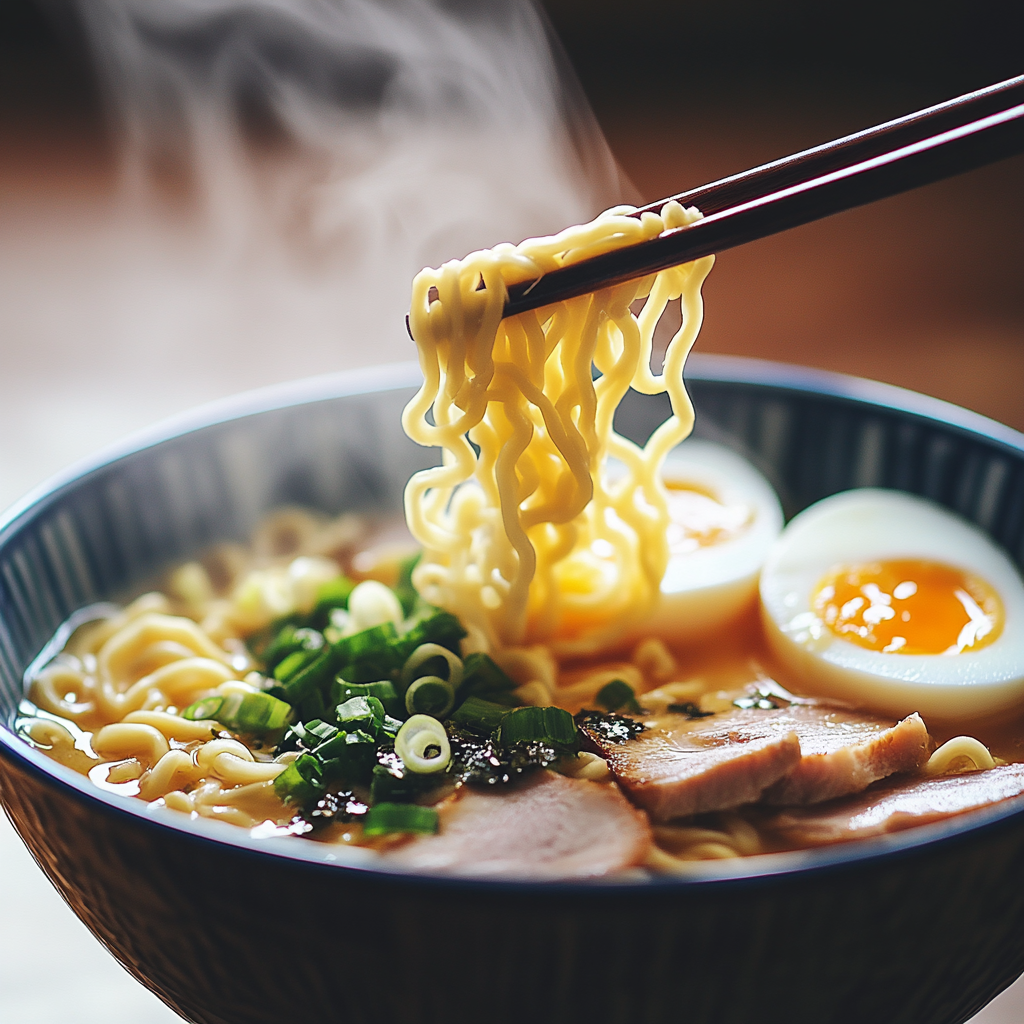Japanese is a language filled with depth, emotion, and a certain charm that’s hard to resist. When it comes to expressing how tasty something is, Japanese slang brings an extra layer of excitement and personality. But what’s the deal with it? Is it just about saying “delicious,” or is there more to uncover? Let’s dive deep into the world of Japanese slang for tasty, unraveling its meanings, cultural significance, and why it’s worth knowing—especially if you’re a foodie or language enthusiast.
“The way people describe food can reveal so much about a culture, don’t you think?” 🍣
Exploring the Meaning of Japanese Slang
Before we explore the actual phrases, let’s think about what slang really is. Slang, in any language, is like the playful younger sibling of formal speech. It’s informal, fun, and often changes with time. In Japanese, slang for tasty goes beyond just describing flavor—it captures feelings, reactions, and cultural nuances.
What Makes Japanese Slang Unique?
If you’ve ever heard someone exclaim “Umai!” in a Japanese drama or anime, you’ve experienced a slice of this culture. Japanese slang is unique because it’s context-heavy. Words can mean different things based on who’s speaking, where they’re from, or even their mood. This makes learning slang both exciting and a bit like solving a puzzle.
For example, “umai” doesn’t just mean “tasty.” Depending on the tone and setting, it could mean “amazing,” “awesome,” or “you nailed it!”
The Most Common Japanese Slang for Tasty
Now for the juicy part—what do you say when something tastes incredible? Let’s break down the most popular expressions you might hear or want to use.
What Does “Umai” Mean in Japanese?

“Umai” (うまい) is probably the most common slang term for tasty. It’s short, catchy, and rolls off the tongue. You’ll hear it in casual settings, especially among friends or when someone is genuinely blown away by the flavor of something. It’s like saying, “Whoa, this is SO good!”
Imagine biting into the perfect bowl of ramen after a long day and just blurting out “Umai!” That’s the kind of vibe this word carries.
“If ‘Oishii’ is the elegant calligraphy of Japanese language, ‘Umai’ is the bold graffiti—cool, expressive, and in-your-face.”
Understanding the Context of “Oishii”
Though not slang in the purest sense, “Oishii” (美味しい) deserves a mention because of its cultural significance. It’s the polite and proper way to say “delicious.” But here’s the catch: in casual conversations, especially among younger people, it might sound a bit too formal.
Think of it as the difference between saying “This is exquisite” and “Yum!”
When to Use “Maji Umai”?
“Maji umai” (マジうまい) is the cooler, street-style version of “Umai.” “Maji” means “seriously” or “really,” so when combined with “umai,” it gives off the vibe of “This is seriously good!” It’s great for dramatic flair, especially when you want to emphasize just how delicious something is.
Picture yourself trying matcha-flavored Kit Kats for the first time. “Maji umai” is what you’d want to say.
How Japanese Culture Influences Food Slang
Language and culture are inseparable, and Japanese slang is no exception. The way people talk about food reflects their relationship with it—something deeply rooted in tradition, emotion, and even regional pride.
Regional Variations in Japanese Food Slang
Japan is a land of regional specialties, each area boasting its unique dishes and flavors. Naturally, the slang used to describe tasty food varies, too. For instance:
- In Kansai, you might hear “Umaah!” which adds a local twist to “umai.”
- In Tokyo, “Maji umai” is more common due to its modern, youthful vibe.
This regional diversity in slang makes traveling across Japan even more exciting because you not only taste different foods but also pick up new ways to describe them.
The Role of Popular Media in Spreading Slang
Anime, movies, and TV dramas play a massive role in spreading and popularizing Japanese slang. Characters shouting “Umai!” when biting into a juicy piece of meat or savoring a bowl of udon have made this term a global favorite.
If you’re a fan of shows like Demon Slayer (Kimetsu no Yaiba), you’ve likely heard Rengoku’s iconic “Umai!” in reference to food. It’s these moments that give slang an almost magical quality, connecting it to pop culture and everyday life.
“Slang is like seasoning—it’s what makes a language come alive. Without it, things might taste a little bland.”
Learning Japanese Slang for Everyday Use

Want to use these phrases confidently? It’s easier than you think, especially if you keep it casual and fun. Japanese people appreciate when foreigners try to learn their language, even if it’s just a few slang terms.
Learning Japanese Slang for Everyday Use
If you’re eager to sprinkle some Japanese food slang into your vocabulary, you’re in for a treat. Learning slang isn’t just about memorizing words; it’s about understanding when and how to use them. Japanese slang for tasty, in particular, is an excellent way to connect with locals, impress your friends, or simply elevate your love for the language.
How to Use Japanese Slang for Tasty with Friends
First things first—slang is all about context. In Japan, you’ll rarely hear someone using slang in formal settings or around elders. It’s mostly reserved for casual conversations with friends, family, or peers. Here’s how you can integrate these expressions naturally:
- Try it at Restaurants: When you’re at an izakaya (Japanese pub) or a ramen shop, don’t hesitate to say “Umai!” after tasting something amazing.
- Compliment a Home-Cooked Meal: If a friend or host cooks for you, using “Maji umai!” can show your genuine appreciation for their efforts.
- Practice with Street Food: From takoyaki (octopus balls) to taiyaki (fish-shaped pastries), street food is the perfect setting to try slang. A quick “Oishii naa” can spark a friendly exchange with vendors.
“Slang is like learning to dance—awkward at first, but once you get the rhythm, it feels natural and fun.” 🎶
Common Mistakes When Using Food Slang
Using slang incorrectly might not ruin your experience, but avoiding these common pitfalls will definitely help:
- Mixing Formality Levels: Avoid using “Umai” in a formal setting, like during a business dinner or with someone you’ve just met. Instead, stick to “Oishii.”
- Overusing Slang: Constantly saying “Umai” for every bite might feel excessive. Mix it up with other reactions like “Yabai” (amazing) or even a simple nod of approval.
- Forgetting Tone: Slang carries emotion. If you say “Umai” flatly, it loses its charm. Add excitement to your tone to make it authentic.
The Evolution of Japanese Food Slang
Just like fashion trends, slang evolves over time. Japanese food slang has an interesting history, blending traditional expressions with modern influences.
Traditional vs. Modern Slang for Tasty
Before “Umai” became mainstream, phrases like “Aji ga ii” (味がいい), meaning “It tastes good,” were more common. These traditional expressions were polite and descriptive. However, as language became more casual, terms like “Umai” and “Maji umai” gained popularity, especially among younger generations.
In today’s world, where everything needs to be Instagram-worthy, people look for snappier, more impactful ways to describe food. Modern slang fits perfectly with the fast-paced, social media-driven culture.
Slang Adaptations in the Digital Age
The internet has played a huge role in spreading and adapting slang. Emoji-laden tweets, food bloggers, and YouTubers often use phrases like “Umai” or even new variations, like “Uma uma” (a playful repetition of “Umai”).
- Hashtags on Social Media: You might see tags like #うまい (umai) or #うますぎる (umasugiru, meaning “too tasty”).
- Food Review Trends: Japanese influencers have made it trendy to exaggerate their reactions to food, using slang to create relatable, funny content.
“The internet isn’t just a place for cat videos—it’s where slang comes to life and evolves faster than ever!” 🌐
How to Master Japanese Food Slang
Ready to master these tasty phrases? Let’s explore how you can incorporate them into your daily life, making them second nature.
Tips for Learning Food Slang Quickly
Learning Japanese slang doesn’t have to feel like cramming for a test. Here are some easy and fun strategies:
- Watch Anime and Dramas: Pay attention to how characters use slang in casual settings. Shows like Food Wars! or Midnight Diner are perfect for picking up food-related slang.
- Practice with a Partner: Language exchange partners or friends who know Japanese can correct your pronunciation and context.
- Repeat What You Hear: Whether you’re at a Japanese restaurant or watching a cooking video, repeat phrases like “Umai” out loud to build muscle memory.
- Use Apps and Flashcards: Apps like Anki or Memrise often include slang phrases, making it easy to practice on the go.
Resources for Practicing Japanese Slang
Here are some resources that can help you stay consistent:
- YouTube Channels: Look for Japanese vloggers who focus on food or language. Channels like Tasty Japan offer a mix of entertainment and learning.
- Online Communities: Join forums or Reddit threads dedicated to learning Japanese.
- Language Meetups: Attend events where you can practice speaking Japanese with locals or fellow learners.
“Learning slang is like adding spice to your vocabulary—it makes everything more flavorful!” 🌶️
The Emotional Impact of Saying “Tasty” in Japanese
Japanese slang isn’t just about words; it’s about emotion, connection, and culture. Saying “Umai” or “Maji umai” is more than a reaction—it’s a way to share joy and build bonds.
Why “Umai” Creates Stronger Bonds Over Food
Food in Japan isn’t just sustenance; it’s an experience, often shared with loved ones. When you say “Umai,” you’re doing more than complimenting the dish—you’re creating a shared moment of appreciation.
Imagine eating a hot bowl of nabe with friends on a cold winter evening. The word “Umai” becomes a collective exclamation, a unifying moment that brings everyone closer.
How Slang Enhances Communication in Japanese Culture
In Japan, where politeness often dictates language, slang is a refreshing break. It adds a layer of warmth and authenticity to interactions, making conversations more relatable. Using food slang like “Umai” can make you seem approachable and even bridge cultural gaps.
FAQs: Japanese Slang for Tasty
When diving into a language, questions often pop up. Let’s address some of the most common ones about Japanese slang for tasty.
What’s the Difference Between “Umai” and “Oishii”?
While both “Umai” and “Oishii” translate to “delicious” in English, their usage differs significantly:
- Umai: Casual and often used in informal settings. It carries a cool, streetwise tone.
- Oishii: Polite and versatile, suitable for both formal and informal settings.
In short, “Umai” feels like saying “Wow, this is amazing!” while “Oishii” is closer to “This is delicious.”
Is It Rude to Use Slang for Tasty in Formal Settings?
Yes, using slang like “Umai” in formal situations could come across as disrespectful. For instance, if you’re dining with a business partner or someone significantly older, stick to “Oishii” or other formal expressions.
Remember, Japanese culture values respect and formality, so choosing the appropriate word matters.
Can Foreigners Use Japanese Food Slang Casually?
Absolutely! Japanese people appreciate it when foreigners make an effort to learn their language, even slang. Just be mindful of the context. Using slang with friends or in casual settings is perfectly fine, but avoid it in more formal situations to show cultural awareness.
What Are Some Regional Variations of “Umai”?
Japan’s rich regional diversity influences even its slang. Some local variations include:
- “Umaah!”: Common in Kansai, with a playful elongation of the word.
- “Bebeta Umai!”: A lesser-known slang from Hiroshima, often used by younger people.
Exploring these variations is like collecting souvenirs from different parts of Japan!
Are There Gender Differences in Using Food Slang?
Historically, men were more likely to use “Umai,” while women leaned toward “Oishii” because it sounded softer and more polite. However, modern usage has blurred these lines, and both terms are now widely used regardless of gender.
How Do You Respond to Someone Saying “Umai”?
If someone exclaims “Umai!” after tasting something, a great response is to agree enthusiastically. You could say:
- “Sou desu ne!” (That’s right!)
- “Maji de?” (Really?)
- Or simply repeat, “Umai!” with a smile.
These interactions make conversations lively and engaging.
Conclusion: Making Japanese Food Slang a Part of Your Vocabulary
Learning Japanese slang for tasty isn’t just about words—it’s about embracing a culture that values connection, flavor, and expression. From the casual “Umai” to the emphatic “Maji umai,” these terms reflect the joy and passion Japanese people feel about their food.
So why not try using them the next time you enjoy sushi, ramen, or even your homemade Japanese-inspired dish? Not only will it enrich your language skills, but it’ll also add a dash of authenticity to your food experiences.
Related Recipes and Inspiration
Hot Pizza Bite Guide – Linked when discussing modern food trends influencing contemporary slang.
Traile Paccheri – Useful in illustrating how global cuisines inspire Japanese slang for tasty.
Chinese Squash Recipes (Kabocha Vegan) – Included to highlight the cross-cultural appreciation of flavors that shape food-related expressions.

